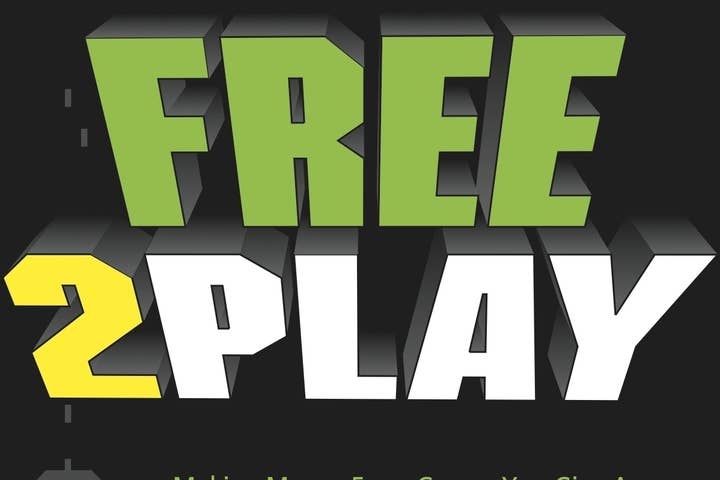Free-to-Play Marketing: Positioning and Proposition
In an extract from Will Luton's new book, we look at marketing techniques and the high-level proposition of your free-to-play video game
The below is an excerpt from Will Luton's book Free-to-Play: Making Money From Games You Give Away which is published by Pearson and available on Amazon UK and Amazon US.
Strategic Positioning
The nitty-gritty of marketing needs a solid product to build upon. If nobody wants your game, your campaign will be ineffective, so creating an attractive proposition is initially about finding a position in the market and then correctly communicating what that is.
According to Al Ries and Jack Trout in their book Marketing Warfare - 20th Anniversary Edition (McGraw-Hill, 2006), there are four warfare strategies that can inform how to position your business and its brands: defensive, offensive, flanking or guerrilla.
"Technology and shifting demographics in games means that the industry favors the brave. However, it is fraught with risk. Many flanking companies crash and burn"
Defensive warfare is for market leaders. Defensive companies can ride on what are popular, known game genres and mechanics, pumping big cash into campaigns for generic products that have an existing, predefined market. The plan is to consolidate their position and act on the strategy that has made them successful. If the market shifts and other strategies become popular, they adopt them.
Most likely, your business is not one of these defensive companies. They are the businesses you want to take players from by making better games and more money than they do. Offensive warfare strategies are for those who want to challenge leaders. An offensively positioned company is one whose products aim to best the products of the defensive company. The games of an offensive company are better because they do something that the market leader can't: They have a patented technology that allows play across platforms or a character that's more appealing. Yet offensive companies have similar marketing resources (i.e. money) to bring in big numbers of players. Often, offensive companies are the number two companies in the market.
Meanwhile flanking warfare strategies are for small companies with less resources but big ambitions. Companies who flank take big risks and use the element of surprise. They gain advantage by being on platforms and in genres that the defensive and offensive players aren't in, surprising them when they generate big audiences and revenues. Lots of big game companies got their breaks and market position by using this strategy. Technology and shifting demographics in games means that the industry favors the brave. However, it is fraught with risk. Many flanking companies crash and burn, never finding the revenue they require.
A much safer strategy for a small company is to use guerrilla warfare. Guerrillas never aim to be market leaders; instead, their goal is to find a small area of the market that they can take and defend. This might be a niche genre, such as a transport simulation, or a platform that has a devoted audience. These companies serve the neglected. Staying small allows them to remain profitable and under the radar of everyone else. If they do grow large enough, they may defect to - get acquired by - larger companies.
Misassignment of strategies is a common failure among companies in the free-to-play gaming industry. Seeing a market leading game and aping it without the marketing ability of the big companies only leads to failure. Small companies need to be innovative, creating demand for a product their rivals aren't making. A similar misstep is having a great proposition and not communicating it correctly.
"Creating the high-level proposition is an art that requires the knowledge of typography, characterization and color theory, all the while keeping in mind the market you're aiming for"
The High-level Proposition
The high-level proposition - how the premise of your game is communicated through its title and visuals - is what makes players evaluate whether or not they want to play your game. In free-to-play all you're required to do is convince a player to part with some time, so the proposition can be light compared to $60 boxed-product games.
If your game seems interesting, it will gain interest. Typically, the high-level proposition is the name (or a logo) and some artwork, often an icon, but this varies from platform to platform and the channel through which your game is exposed. Your objective with this proposition is to communicate a compelling message to potential players that makes the game appealing. This message might be the action the player takes on, the theme of the game, its characters and its quality. Ideally, your high-level proposition will contain all of these elements while standing out as unique.
Creating this proposition is an art that requires the knowledge of typography, characterization and color theory in addition to other techniques, all the while keeping in mind the market you're aiming for, including age, background and preferences. Spending the time iterating and improving this message will pay huge dividends throughout a product's life.
By running test campaigns and monitoring and comparing CTRs (Clickthrough Rates), you can get an idea of the effectiveness of your propositions. This is best done by using multivariate testing where each variable - name, artwork, typography and so on - is tested in every permutation. The results will give you insight into what players want, and when compared against existing successful propositions, how appealing your title could be.
The quality of your high-level proposition can make or break your game. If your proposition is wrong, nobody will want to play.
Will Luton is a free-to-play designer and consultant. This is part of a regular series of features for GamesIndustry International looking at the future of the video game business. You can follow him on Twitter and visit his personal site here.

